
The Bauhaus Interior Design Style, often synonymous with simplicity and functionality, has had a lasting impact on the world of design. Born from a German art school that sought to marry art, design, and functionality, Bauhaus has become a defining movement in modern design. In this article, we’ll delve into the history of this influential style, discuss its key elements, and explore how you can incorporate the Bauhaus aesthetic into your own living space.

Table of Contents
History of Bauhaus Interior Design Style
Founded in 1919 by architect Walter Gropius, the Bauhaus school aimed to break down the barriers between fine arts, crafts, and technology. The school’s philosophy revolved around the idea that art should meet the needs of society and that design should be functional and accessible to all. With the rise of the Nazi regime in the 1930s, the Bauhaus school was forced to close, but its ideas and influence continued to spread across the globe (learn more about Bauhaus history here)
The Bauhaus Interior Design Style emerged from this movement, emphasizing clean lines, geometric shapes, and a focus on functionality. Influenced by the modernist movement and the Industrial Revolution, Bauhaus design sought to create spaces that were both practical and visually appealing.
What defines Bahaus interior design?
Several key elements define the Bauhaus Interior Design Style, which can be easily incorporated into any living space:
@axxla.com Unlock the secret of Bauhaus interior Design for a timeless abode #homedecor #architecture #furniture #homedesign #bauhausdesign #bauhaus #bauhaus101 #home #design #inspo #livingroom #homesweethome #interior ♬ Aesthetic – Tollan Kim
Simplicity
Bauhaus design is marked by a minimalist approach, with a focus on clean lines, geometric shapes, and an absence of unnecessary ornamentation. The mantra “form follows function” underpins this design style, as the aesthetic appeal of a piece is often derived from its practicality.
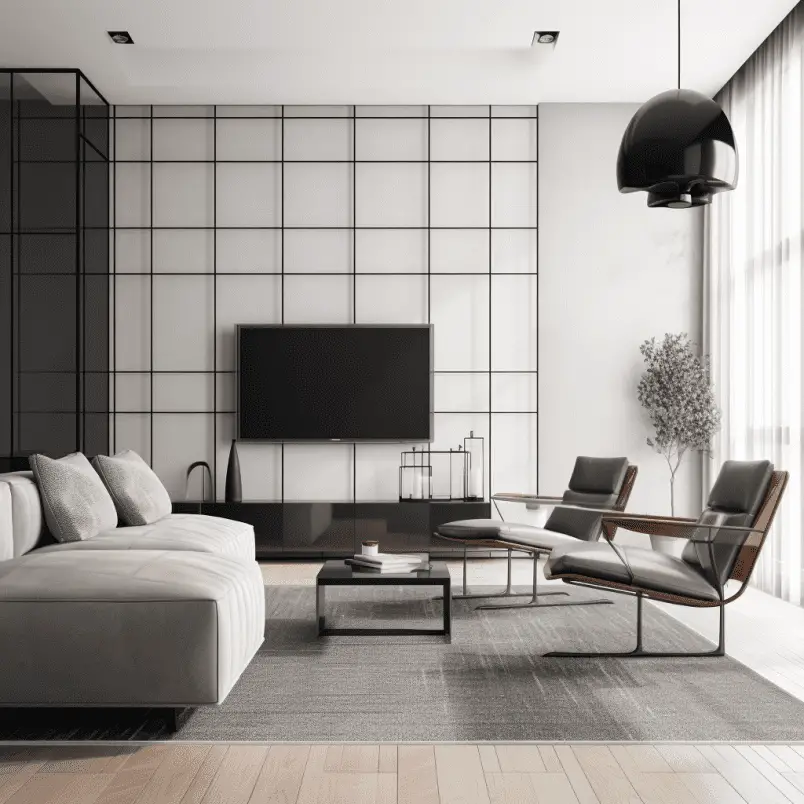
Functionality
As mentioned, Bauhaus’s design places a strong emphasis on functionality. Furniture and accessories are designed to serve a specific purpose, with practicality at the forefront of each design decision.
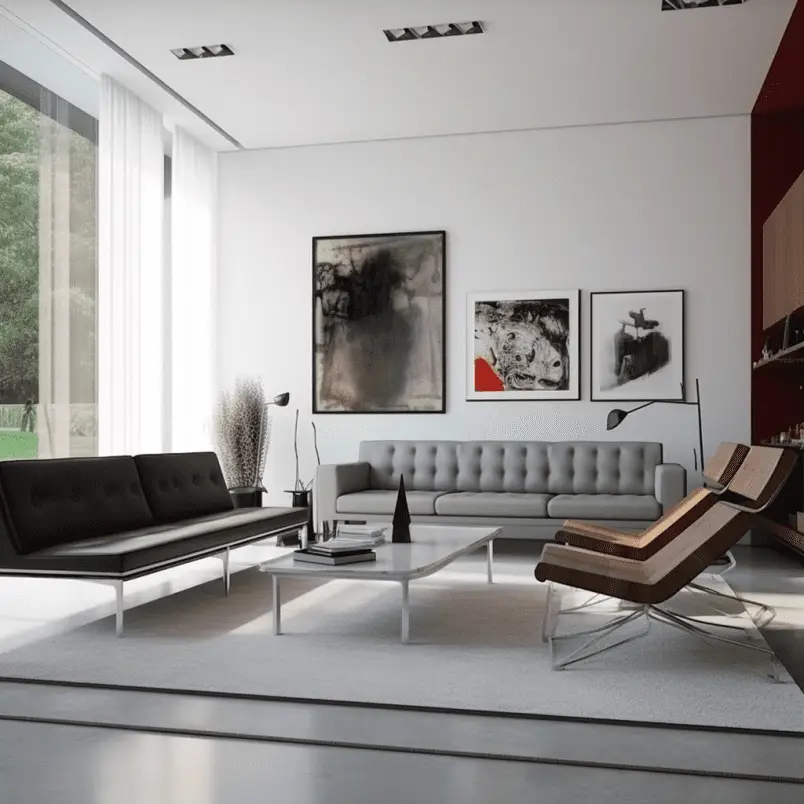
Materials
The Bauhaus style embraces the use of modern materials, such as steel, glass, and concrete. These materials not only reflect the influence of the Industrial Revolution but also contribute to the clean and streamlined appearance characteristic of Bauhaus design.
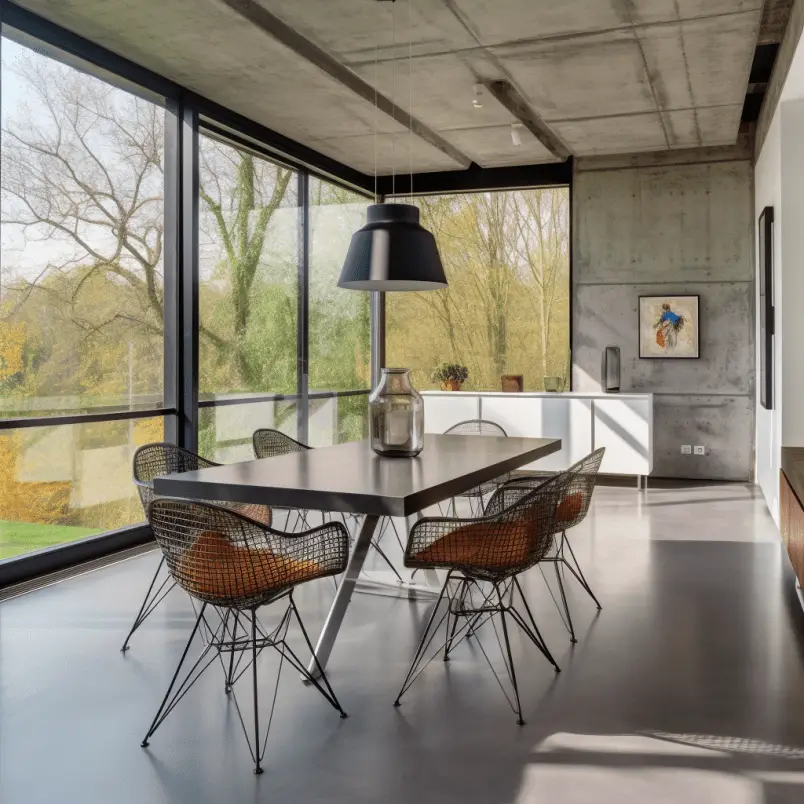
Color
Bauhaus design typically incorporates a neutral color palette, with primary colors like red, yellow, and blue serving as accent hues. These colors are often used sparingly to create visual interest without overwhelming the minimalist aesthetic.
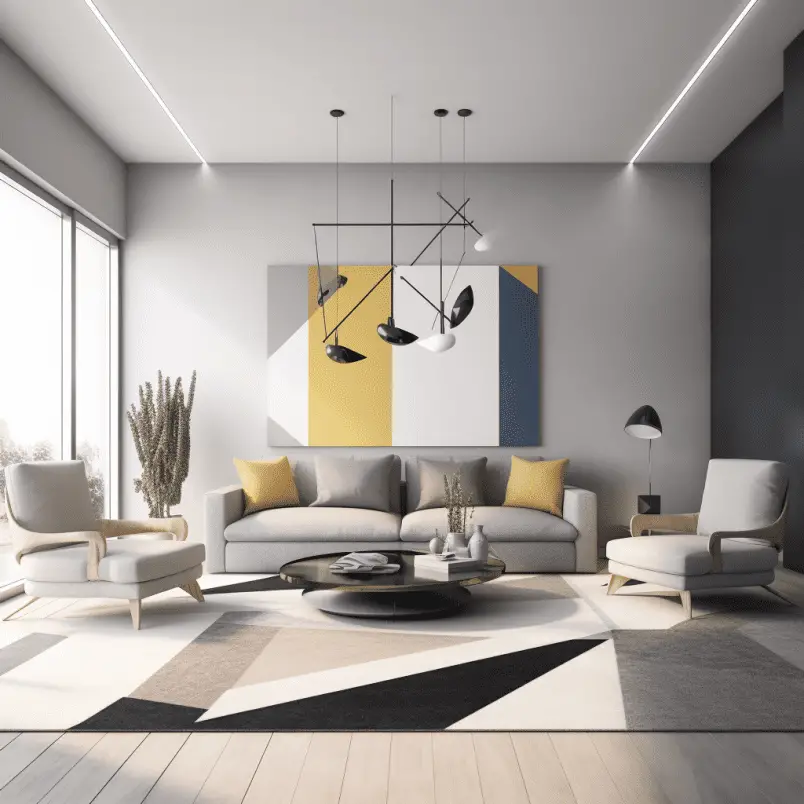
How you can achieve the Bauhaus look in your home
Incorporating the Bauhaus style into your home is a straightforward process, as the key elements can be easily adapted to any space. Here are a few tips to get you started:
- Choose functional furniture: Look for pieces that prioritize functionality without sacrificing visual appeal. Bauhaus furniture often features clean lines and geometric shapes, with a focus on comfort and practicality.
- Embrace modern materials: Incorporate materials such as steel, glass, and concrete into your design, whether through furniture, accessories, or architectural elements.
- Opt for a neutral color palette: Keep your base color palette neutral, with shades of white, gray, and black. Add pops of primary colors through artwork or accessories to create visual interest and stay true to the Bauhaus aesthetic.
- Simplify your décor: Remove unnecessary ornamentation and clutter from your space, focusing on the essential pieces that serve a specific function. The streamlined aesthetic of Bauhaus design is achieved through thoughtful editing and the careful selection of items that both serve a purpose and are visually pleasing.
- Incorporate geometric shapes: Look for opportunities to introduce geometric shapes into your design, whether through artwork, rugs, or even the shapes of your furniture.
Examples of Bauhaus interior design successfully implemented in different rooms
Here’s how to apply the Bauhaus Interior Design Style in various rooms of your home:
Living room
Choose a minimalist sofa with clean lines, and pair it with a functional coffee table that features geometric shapes. Add a few primary-colored accent pieces, such as throw pillows or a piece of artwork.
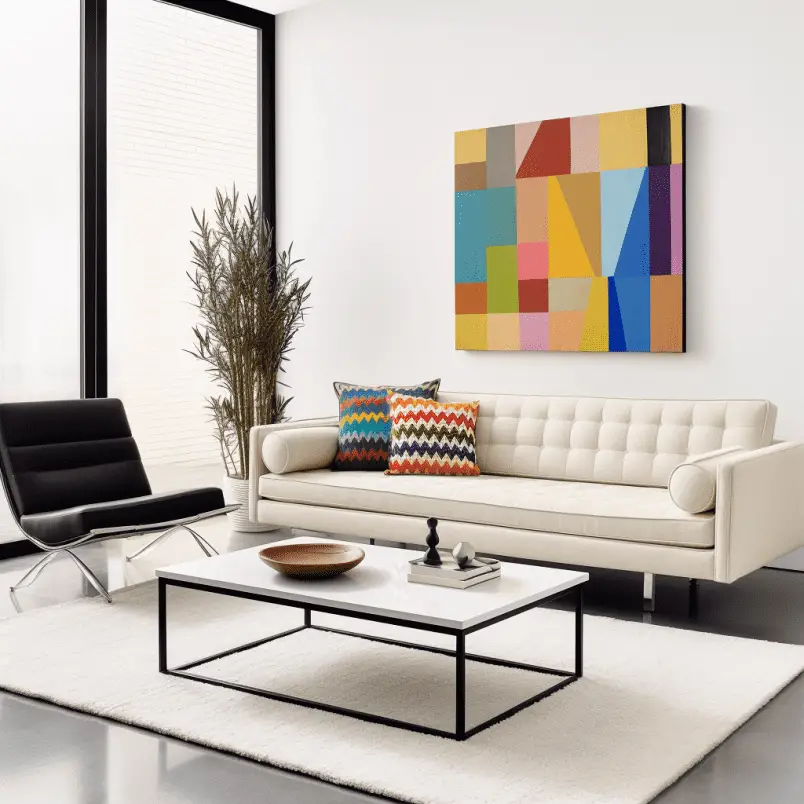
Dining room
Opt for a simple, modern dining table with geometric legs or supports, and complement it with streamlined chairs. Keep table settings minimal and use primary-colored dishware or glassware for a pop of color.
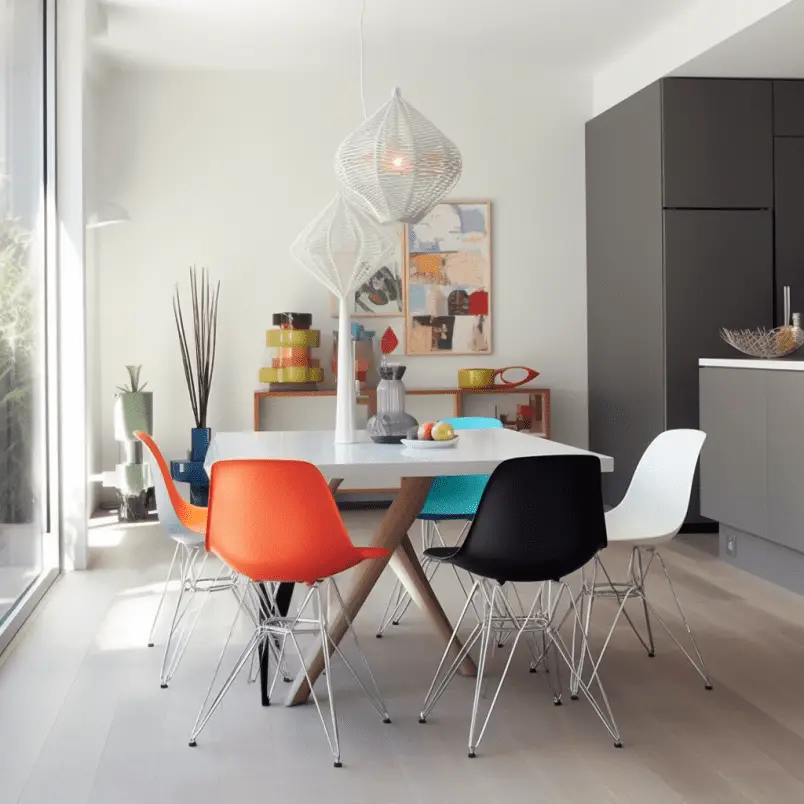
Bedroom
Select a bed frame with a simple, linear design and pair it with functional bedside tables that feature clean lines. Use bedding in neutral tones and add a splash of color through accent pillows or a piece of artwork.
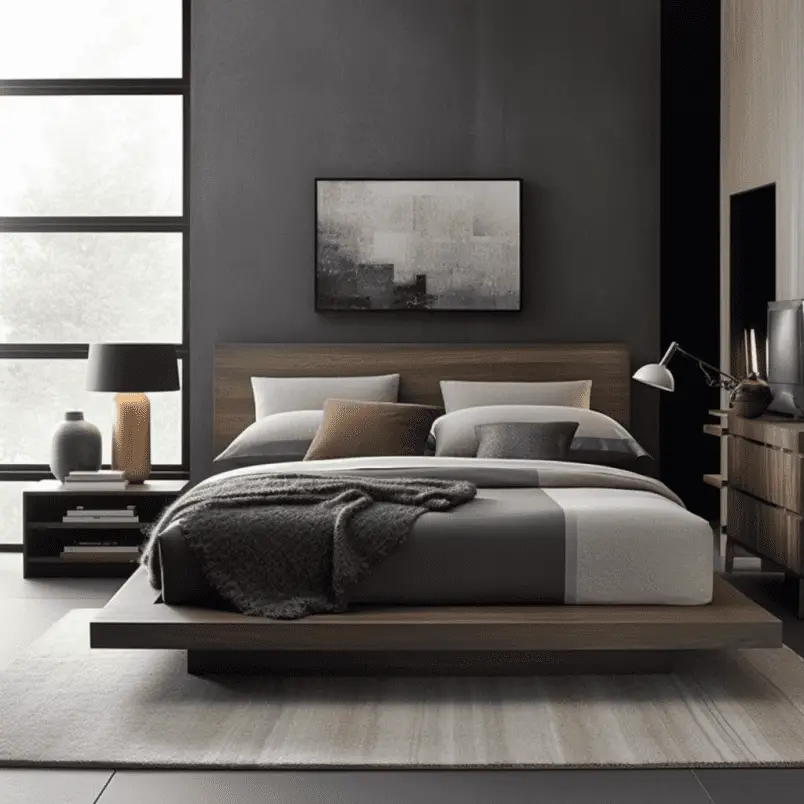
Kitchen
Emphasize functionality with sleek cabinetry and modern appliances. Use a neutral color palette for the walls and countertops, and incorporate primary colors through small appliances or accessories. Opt for open shelving and streamlined storage solutions to maintain a clean, uncluttered appearance.

Pros and cons of Bauhaus Interior Design
As with any design style, there are pros and cons to consider when adopting the Bauhaus aesthetic in your home.
Pros:
- Timeless appeal: The simplicity and functionality of Bauhaus design make it a timeless choice that can easily be adapted to changing trends and personal preferences.
- Versatility: Bauhaus design can be seamlessly integrated with other design styles, creating a unique and personalized aesthetic.
- Ease of maintenance: The minimalist nature of Bauhaus design often translates to a clutter-free and easy-to-maintain living space.
Cons:
- Potential for sterility: The clean lines and minimal ornamentation of Bauhaus design can sometimes create an overly sterile environment if not balanced with warm materials and pops of color.
- Limited options for personalization: The focus on functionality and simplicity can make it challenging to infuse a space with personal touches, especially if one’s taste leans toward more ornate or eclectic styles.
Conclusion
The Bauhaus Interior Design Style is a timeless and functional aesthetic that emphasizes simplicity, practicality, and modern materials. By understanding the key elements of this design movement and incorporating them into your home, you can create a stylish and uncluttered living space that feels both contemporary and timeless. Be mindful of the potential drawbacks, such as sterility or limited personalization options, and find ways to balance these aspects with warmth and individuality. With thoughtful planning and a clear understanding of the Bauhaus principles, you can create a beautiful and functional home that showcases the best of this iconic design style.
FAQ
What is the Bauhaus Interior Design Style?
The Bauhaus Interior Design Style is a modern design movement originating from the Bauhaus school in Germany. It emphasizes simplicity, functionality, and the use of modern materials.
What are the key elements of Bauhaus design?
The key elements of Bauhaus design include simplicity, functionality, modern materials, geometric shapes, and a neutral color palette with primary colors as accents.
How can I incorporate Bauhaus design into my home?
To incorporate Bauhaus design, choose functional furniture with clean lines, use modern materials, opt for a neutral color palette with pops of primary colors, simplify your décor, and incorporate geometric shapes.
What are the pros and cons of Bauhaus design?
Pros of Bauhaus design include its timeless appeal, versatility, and ease of maintenance. Cons include the potential for sterility and limited options for personalization.
Can Bauhaus design be combined with other design styles?
Yes, Bauhaus design is versatile and can be seamlessly integrated with other design styles, allowing you to create a unique and personalized aesthetic in your home.

